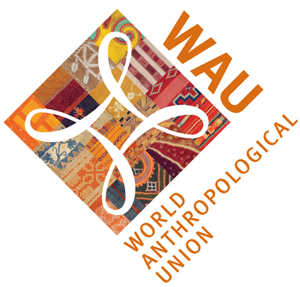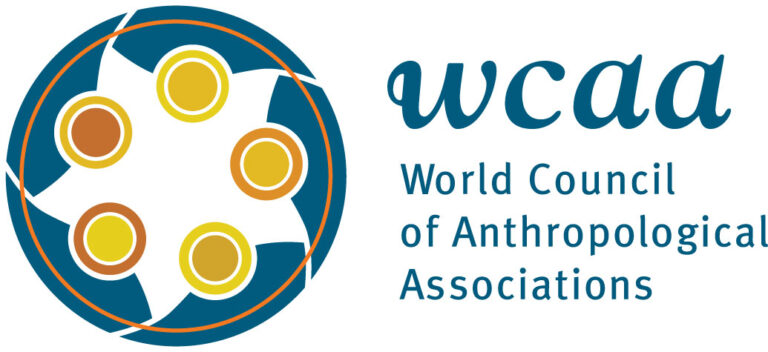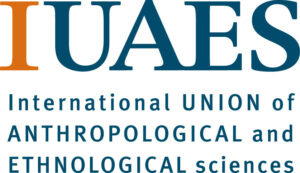Questions for Journal Editors for the Tenth Anniversary of Deja Lu
Brad Weiss, editor of Cultural Anthropology, interviewed by Leilah Vevaina
June 2021
Vevaina: So, please tell us a little bit about Cultural Anthropology. who publishes it and what kind of authors are usually drawn to submit?
Weiss: Sure. I am one of three members [Chris Nelson, Heather Paxson, and Brad Weiss (2018–2022)] of the editorial collaborative for Cultural Anthropology, the journal of the Society for Cultural Anthropology, which was started in 1986. It has a very high profile as measured by its impact factor, its circulation, the number of members of the SCA; it has routinely been the one of the top two or three sections in terms of membership in the AAA for quite some time. Probably the most relevant point for Deja Lu is that we are the only open access journal that is part of the AAA.
The AAA publishes all of its journals through its relationship with Wiley; that contract is currently under negotiation or at least under reconsideration right now. We, in 2013 or 2014, were the only section that wanted open access. The way that we’ve been able to do that is, we’ve had to maintain a relationship with Wiley, we’ve had to provide them with the means of using our articles as part of AnthroSource, which is the product that they sell subscriptions to. So, in effect we remain as a resource: you can find Cultural Anthropology articles on AnthroSource. But we were also permitted to have our own platform that we publish the journal on, and so it required that we have a website which we already had, but we added the functionality that would allow it to publish: essentially PDFs, but also HTML and other kinds of formats for journal articles as well, so the quarterly journal we come out four times a year has been published on the website of the Society for Cultural Anthropology starting in 2014, freely available to anybody with internet access. And it’s been that way ever since. That’s mostly been a hugely successful and productive move for us. It is costly and so there is the question of how to pay. Open access does mean free to read, but it is not free to create.
We have been fortunate to have had resources already on board; when we decided to do this, we enjoyed tremendous support from our membership and our membership sustained us for a long time. And because we did remain a part of Wiley, there were royalties that also sustained us for the first several years. We’re now at an inflection point where it looks as though it’s going to be harder to find those resources. The way that we’ve been successful is precisely because open access has been tremendously attractive to a lot of authors, and of course readers.
The entire journal is self-contained on that platform, and that allows us to track things much more readily; it allows us to have a better sense of how successful open access is. We can see downloads, we can see clicks, we can see when people land on our webpage. And what we notice is that our scope is truly international, that we have a very wide range of readership that is by no means limited or even dominated by North American anthropology at all; there’s a huge group of not just Europeans, but also folks in South America, folks in South Asia, folks in in Western Asia, and in East Asia that are really interested in what’s going on in American anthropology. Cultural Anthropology is a great opportunity for them to participate as readers but also as authors. Because increasingly, as I’m sure you know, around the world there are pressures, in some cases legislative requirements, that any research that’s supported through public funding, for example in the European Union, has to be published in an open access platform and there are many ways that you can do that. A lot of scientific literature builds the funding of open access into its granting procedure, so if you get a grant, you can ask for funds that will go towards what are called article processing charges that you give to a journal and say, “okay, I would like to make this an open access publication.” We do not have any fees associated with our journal; if you publish with us, there’s a $25 fee if you’re not a member of the society to have us look at your paper, which we waive in every single case that people ask us to waive it because people only ask if they really need it. Precisely because of those expectations that funded research, be disseminated in an open access platform, people look at us and say, “Oh, I wrote this paper and, and now in order to be in compliance, I’m submitting it to Cultural Anthropology”; that’s mostly been fantastic.
So [under our leadership] we immediately noted the diversity of authorship, the huge range of scholars, whose work we’re reading, from Turkey from Southeast Asia, from East Asia, increasingly from Latin America as well, which is fantastic. A lot of the times, to be frank, there’s plenty of people who send us stuff that’s totally inappropriate for us because we have a very generic sounding name; “cultural anthropology” could be anything. What we have seen every year since we’ve gone open access is that the number of submissions has increased but the number of acceptances has not, so we are an even more selective journal than we were when we started, and our readership has expanded and become much more diverse and much more international. By all those measures, we’re thrilled with how successful the open access effort has been. We’ve been delighted to be in collaboration with Déjà Lu. We have a prize that is given by the society, every year for the best paper in the journal and it’s a jury by a group of graduate students who apply to be on that jury, and we send Déjà Lu the best paper.
But, you know, that doesn’t mean one size fits all [in terms of open access]. We have to figure out how it can work for different kinds of publications and different kinds of organizations, but we think that that’s an inevitable dimension of the future. Moreover, it’s part of the ethos of anthropology to be fully global. I’ve done the majority of my research in Tanzania and for Tanzanian scholars to get access to the work that we do in American anthropology, subscriptions are prohibitive. And open access is the only reassurance that we have that we can at least make an effort to be truly collaborative and truly diverse in our authorship as well as our readership.
Vevaina: Are there any language options within the journal or is English the way to go?
Weiss: That’s a great question. As I’m sure you know, translation is really expensive, and so it is a challenge for us to figure out. We publish abstracts in foreign languages and languages that are appropriate to the papers that are published either because there’s a scholarly community that would be interested or a field site that would be relevant. And we’ve had a huge diverse array of abstracts in a truly international range of languages which has been fantastic. We’ve been fortunate to be able to edit and review those abstracts by drawing on a very large editorial board. In my case I was able to help with an abstract that came in in Swahili, just to confirm that the Swahili was actually very good and the translation was quite good.
And we do have a large editorial board that will read work that comes in in Eastern European languages and South Asian languages and Portuguese and Spanish, etc. We asked authors who are usually thrilled to be able to say “Wow, I can put up my abstract and actually get some readers that pursue this paper because they read the abstract!” That has been something that we’ve done, so that’s where we would welcome any kind of opportunity we can to work in multiple languages; that’s going to take some real collaboration again. What we don’t do is publish work in translation that have been published elsewhere. There are other venues through the AAA to do that.
Vevaina: Can you speak a bit about collaborative editorship?
Weiss: We [Chris Nelson, Heather Paxson, and Brad Weiss] were the first group to be at multiple institutions, and we drew on the resources and opportunities that were available through those multiple institutions. I mean, to be frank, the reason that the size of the editorship has expanded is because the workload is substantial. And the resources that you can draw on from more multiple universities are helpful in offsetting some of the production costs of the journal, and so it’s good to have people in different places who can get different resources. Maybe you can get the leases in one place, maybe you can get actual money in some other place, maybe you can get a graduate student assistant in another place. I think having an editorial collective increases the possibilities of doing this; it’s a truly international group of scholars who come from Europe who come from South America who come from North America, as well as some junior and senior people. So, you know, it’s a very exciting time.
Vevaina: In your tenure, how do you divide the work? Is the editorial process divided by expertise or by area focus?
Weiss: The answer is kind of yes and no for most things. The three of us do everything together. So, when papers come in, we all read all of them. And we all make a determination as to whether they should be reviewed. And when the reviews come in, we all read all of the reviews and collectively decide, should they go out back out for reviews or should they be rejected or should we work with the author towards publication? Once we have accepted a paper, we know we want to publish it because it’s been through, usually, two rounds of successful review. Then we will designate one of the three of us to work with that particular author to make final revisions and sometimes very substantial revisions on that paper. Usually this one-on-one work reflects the specific interests of the editor. I’ve certainly worked on papers that I never would have imagined were directly relevant to my interest, but, you know, all three of us have pretty eclectic and wide- ranging interests. I do tend to work with the authors of Africa because it is an area of expertise. When we have papers about East Asia, Nelson tends to work on this. We all have our own areas of focus, but moreover we all just express an interest in and a willingness to do it.
We also have what is called the Editors’ Forum in the journal, and Hotspots and Theorizing the Contemporary. And then there’s another forum called Colloquy. Those are long-form essays that are not really full-length manuscripts but are in a group that are meant to be in conversation with one another, ideally in debate with one another about emerging concepts.
Vevaina: Now, that sounds like a lot.
Weiss: It’s a lot. You know every single day since I was named editor of Cultural Anthropology, I’ve had something to do for the journal in some way or another. It never goes away. It’s also incredibly satisfying. I mean it’s a hugely important journal. You know this reflects the wide array of the field, so that’s been really wonderful for me to be able to have that opportunity. And you do have the responsibility, but it’s a real pleasure to feel like you’re encouraging and promoting good work that’s being done in the field.
Vevaina: Is there any sort of direction you’d like to go in? Are there kinds of authors that you would like to encourage more to publish? Would you like to harness and direct something in a certain direction?
Weiss: I would love to see more scholarship by African scholars, that’s an underrepresented area and scholarship and of course it is my own personal background and concern and interest. so that’s one. I would like to support that kind of work. Cultural Anthropology is an interesting journal for a number of reasons. It’s one of the reasons why it’s so popular, but also one of the limitations: it kind of serves as a credentialing mechanism if you know what I mean. “I need a job. If I publish my paper in Cultural Anthropology, that will help me get a job, or to get tenure.” And these are things that are not really going to go away, because that’s the nature of the academy right now and we totally understand that. It would be really helpful for authors if they recognized that they need to seek out opportunities for collaboration and peer review before they submit their article. It’s so imperative that people see their work as subject to review and subject to editing. I would just like to encourage everybody out there to see their jobs as scholars as being readers and collaborators and mentors to others, and you also can be a mentee.
Vevaina: Excellent. I think that’s a really important note. I think now that I’m guiding young students and scholars: Don’t be precious about your writing.
Weiss: Yes, people ask: how do you get published? And I just say, I send my papers in. Then when I get criticism, I respond to the criticism because I’m not trying to write a perfect paper, I’m trying to write a paper that addresses the interests of the people that are going to read it, and if readers consistently say that this idea doesn’t make sense or it isn’t well developed, or it’s confusing, then I better do something about that.
I am a huge fan of peer review. There’s been a lot of pushback, as I’m sure you know in recent years against peer review, because they see it as either a gatekeeping mechanism or as a mode of enforcing a canon, and those are all risks of peer review. There’s no question but that peer review has the potential to be very conservative process, but it also has the potential to be incredibly liberating. If you really get dedicated readers who are willing to say, “this is innovative but I’m not sure I get it all. If it’s going to work, it’s going to need XY and Z.” People often apologize for the fact that they’ll even reference themselves and say “I’m really sorry, but that I did write about this,” and I totally understand that. But I think we see enough of peer reviews to recognize that the bad reviews are the ones that are really limiting but the really expansive reviews are the ones that are really helpful, and we recognize the difference.
Vevaina: Excellent. Thank you. I hope that Covid-19 hasn’t disrupted everything too much.
Weiss: No, I mean, I have to say, we were really cognizant of it, it changed our work in some ways. It was harder to find people to do readers’ reports and to review papers; that’s the one thing that drops to the bottom of everybody’s priority list. We’ve changed our communications to always say, we understand that this is a really challenging time and we hope that you’re well and that your family is well; we tried to personalize our editorial communications. But I will say, we’re one of the only journals that didn’t stop publication at all We kept up our publication schedule; we produced an issue at every turn.
In April of 2020, we put out a call for a Hotspot concerning Covid-19 for anybody to submit, and we got something like 110 submissions; we knew that not all of them were going to work, but we’ve published, I think, 53 of them. In terms of teaching, how do we help? Talk to your students about this: in what’s going on in the world, what does the anthropology have to say about that? How is anthropology relevant in the world? We are crazy if we don’t all recognize that there’s going to be an enormous influx: like every single undergraduate student for the next 10 years is going to say, “I want to know more about public health, I want to know more about the social conditions of communicable disease, I want to know more about what the infrastructures that maintain health.” Anthropologists have to confront this moment and recognize this. We need to provide our students with the wherewithal and the resources and the toolkit to recognize that these are social lessons here.



